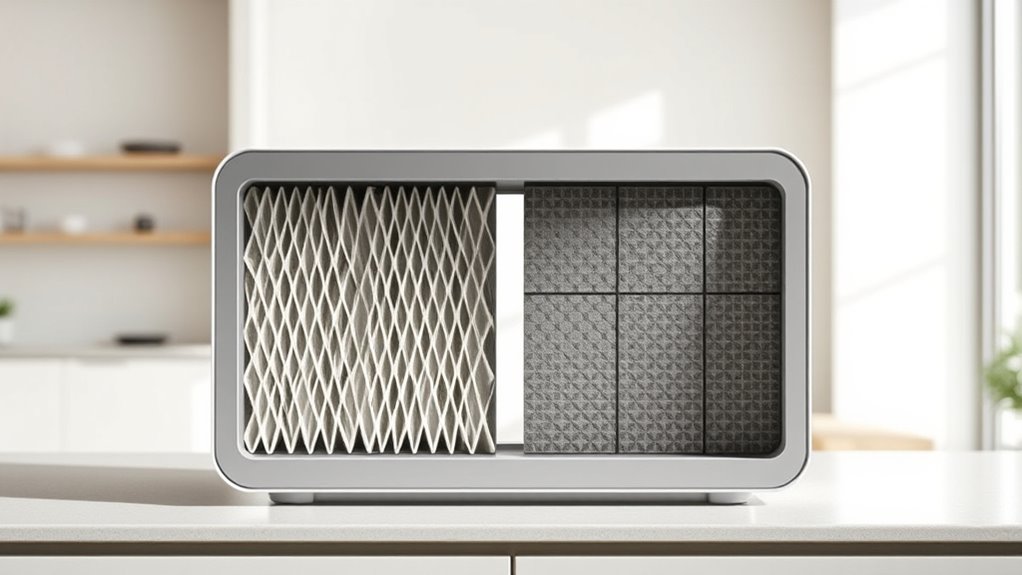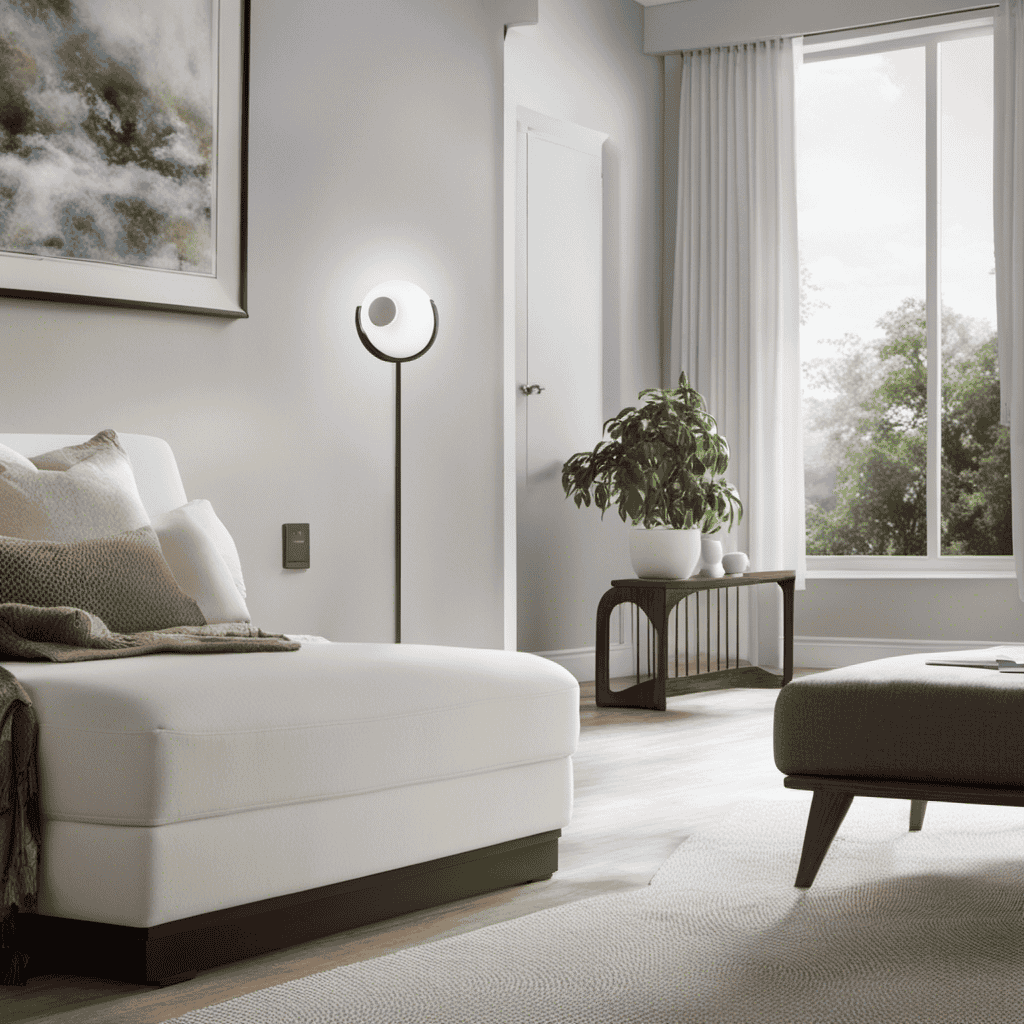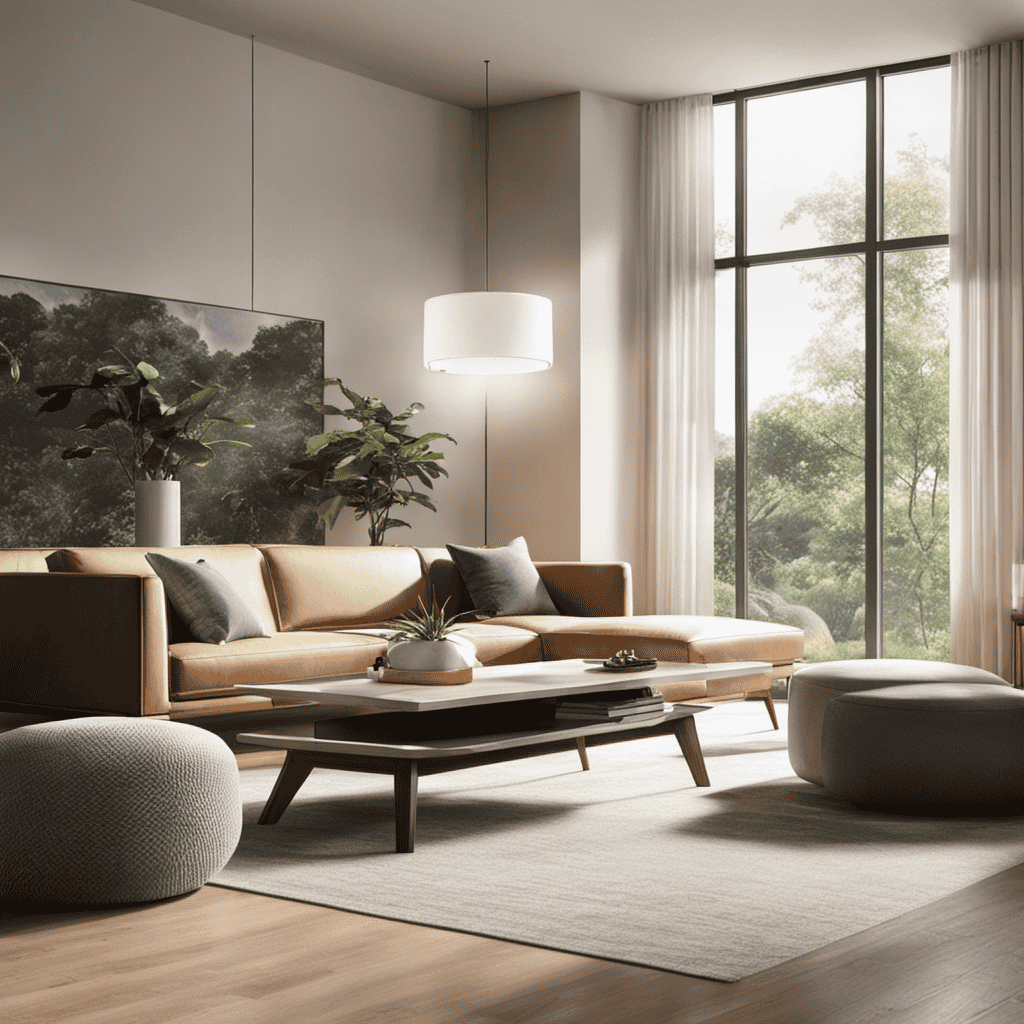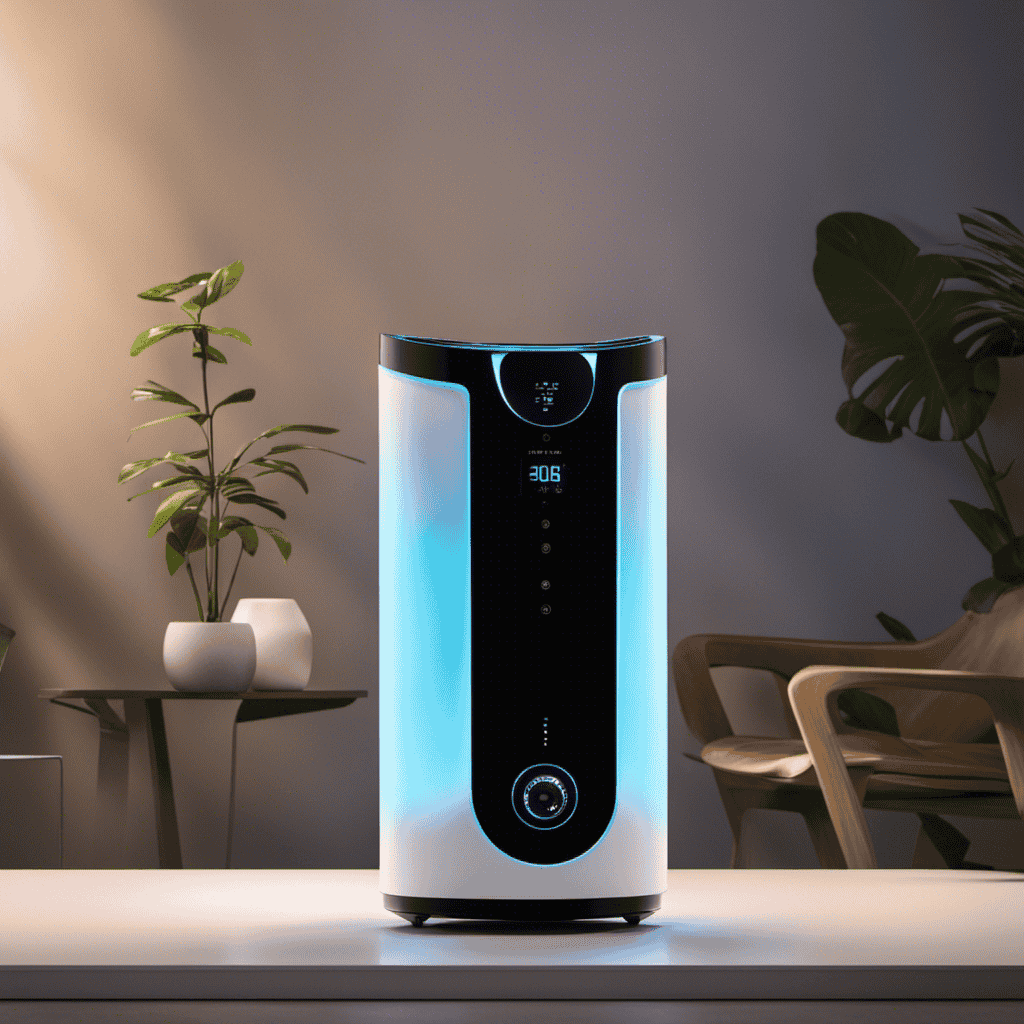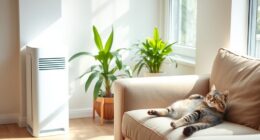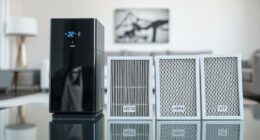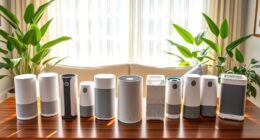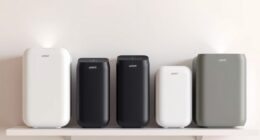Yes, you can combine HEPA and electrostatic filters in one unit, but it’s important to guarantee compatibility and proper maintenance. Electrostatic filters can be cleaned and reused, while HEPA filters need regular replacement. The electrostatic pre-filter helps capture larger particles, extending the HEPA’s lifespan and improving efficiency. However, electrostatic filters may lose their charge over time, affecting performance. To get the best results, follow manufacturer guidelines and maintenance tips to keep air quality high—learn more to optimize your setup.
Key Takeaways
- Combining HEPA and electrostatic filters can enhance air purification but requires proper maintenance to prevent performance loss.
- Electrostatic filters can be used as pre-filters to extend HEPA filter lifespan, provided they are compatible and well-maintained.
- Electrostatic filters may lose static charge over time, reducing their effectiveness when combined with HEPA filters.
- Always follow manufacturer guidelines to ensure compatibility and avoid damaging the filtration system.
- Regular cleaning and timely replacement of filters are essential to maintain optimal air quality in combined filter setups.
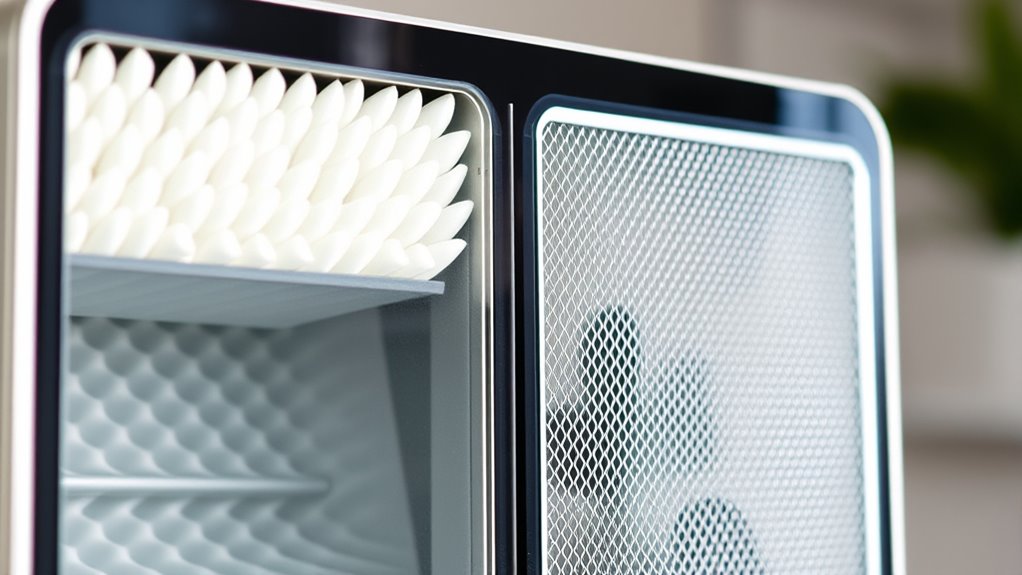
If you’re considering combining HEPA and electrostatic filters in one air purifier, you might wonder whether it’s a good idea or if it could impact the unit’s performance. Many people want the best air quality possible, so layering filters seems like a smart move. However, understanding how these filters work together is essential to avoid unintended consequences. When you mix different filtration technologies, it’s important to consider their impact on the air filter lifespan and maintenance protocols. HEPA filters are known for their high efficiency at capturing tiny particles like allergens, dust, and bacteria, but they typically need to be replaced every 6 to 12 months, depending on usage and air quality. Electrostatic filters, on the other hand, use static electricity to attract particles and can often be cleaned and reused, which might seem convenient.
However, combining these filters can introduce some challenges. For instance, electrostatic filters tend to lose their charge over time, especially if they get dirty or are not cleaned regularly. This can reduce their effectiveness, meaning you’ll need to pay close attention to maintenance protocols to keep the unit functioning at its best. When you add a HEPA filter into the mix, it’s vital to understand how the two filters interact. In many cases, an electrostatic pre-filter is used to capture larger particles before air reaches the HEPA filter, extending its lifespan. This setup can reduce the frequency of HEPA replacements, potentially saving you money in the long run. But if the electrostatic filter isn’t maintained properly, it can become clogged or lose its charge, forcing the HEPA filter to work harder and possibly reducing its lifespan.
Maintaining a balance between these filters requires following proper maintenance protocols. Regularly cleaning the electrostatic component and replacing or inspecting the HEPA filter according to the manufacturer’s recommendations ensures maximum performance. If you neglect maintenance, both filters can become less effective, leading to poorer air quality and possibly higher energy consumption. Also, be aware that some units are designed to accommodate both types of filters, so check the product specifications before attempting to mix or modify filters on your own. Properly designed units will help you maximize air quality while minimizing the need for frequent replacements and repairs. Additionally, selecting filters with advanced filter technology can optimize performance and longevity of your air purifier.
Frequently Asked Questions
Do HEPA and Electrostatic Filters Interfere With Each Other’s Efficiency?
You might wonder if HEPA and electrostatic filters interfere with each other’s efficiency. Generally, their filter compatibility is good, but mixing them can impact airflow, potentially reducing overall performance. Electrostatic filters rely on static electricity, while HEPA filters trap particles physically. Combining them may cause airflow restrictions or reduced filter life, so it’s best to take into account your specific air purifier’s design and consult manufacturer guidelines to guarantee maximum efficiency.
Are There Any Safety Concerns When Combining These Filters?
When considering filter compatibility and safety precautions, mixing HEPA and electrostatic filters generally isn’t risky if your unit supports it. However, you should check your device’s instructions to guarantee compatibility. Some concerns include airflow restriction or filter damage, which could affect safety. Always follow manufacturer guidelines and avoid forcing incompatible filters. Properly installed, combining these filters can enhance air purification without compromising safety.
How Does Maintenance Differ Between Mixed Filter Systems?
You might find maintenance more involved with mixed filter systems. Unlike single filters, you’ll need to follow specific installation procedures for each type, ensuring they work together properly. Filter replacement can be more complex, as electrostatic filters may need cleaning or recharging, while HEPA filters require regular replacement. Staying attentive to these differences helps maintain ideal air quality and system efficiency, making your maintenance routine more thorough but ultimately more effective.
Can Mixing Filters Improve Overall Air Quality?
Mixing filters can improve overall air quality by capturing a broader range of particles. You might notice better filtration and cleaner air, but it could also impact filter lifespan, meaning you’ll replace filters more often. Additionally, consider cost considerations, as combining filters can increase upfront expenses. While this approach offers enhanced purification, weigh the benefits against potential higher maintenance and replacement costs to decide if it suits your needs.
Are Compatible Filter Sizes Available for Combined Units?
Like a puzzle needing the perfect fit, finding compatible filter sizes matters. You’ll want to check filter compatibility and size availability before mixing. Many units offer adjustable or compatible sizes for combined filters, much like a tailor-made suit. Always verify manufacturer recommendations, and choose filters that match your unit’s specifications. This guarantees ideal performance without risking damage or reduced air quality, giving you cleaner, healthier air.
Conclusion
Mixing HEPA and electrostatic filters in one unit isn’t recommended because they function differently and can interfere with each other’s efficiency. Combining them might reduce overall air quality and compromise filtration performance. Do you really want to risk letting airborne particles slip through? Instead, choose the right filter for your needs or use them separately for maximum protection. Prioritizing proper filtration ensures cleaner, healthier air for you and your loved ones.
